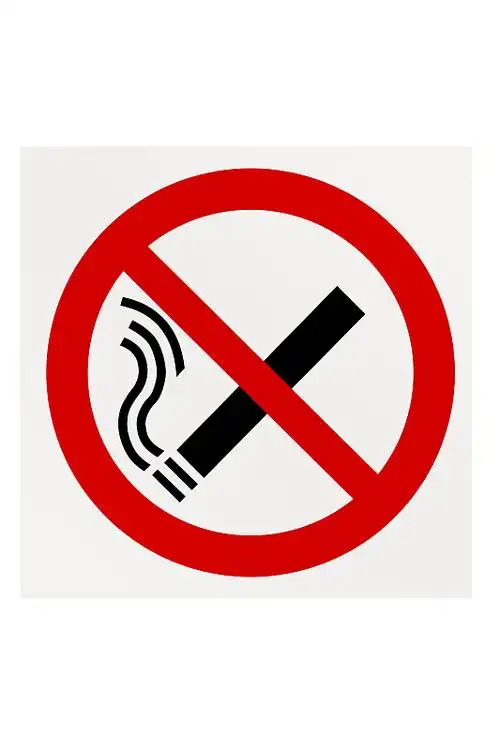Unraveling the Link: How Smoking Accelerates Pulmonary Function Decline in Idiopathic Pulmonary Fibrosis
Idiopathic Pulmonary Fibrosis, or IPF, is a challenging and life-limiting lung disease. For those diagnosed with it, and for their loved ones, understanding what influences the progression of the disease is paramount. One of the most persistent questions that arises is about lifestyle factors, particularly smoking. If you or someone you care for is navigating life with IPF, you've likely wondered about the connection between a history of smoking and the rate at which lung function declines. This article aims to provide a comprehensive and clear exploration of this very topic, delving into how smoking relates to the rate of decline in pulmonary function in Idiopathic Pulmonary Fibrosis.
To begin, let's establish what we mean by pulmonary function. In the simplest terms, pulmonary function refers to how well your lungs work. For patients with IPF, this is most commonly measured by a test called spirometry, which assesses the Forced Vital Capacity (FVC). Your FVC is the total amount of air you can forcibly exhale after taking the deepest breath possible. In a healthy lung, this process is effortless. However, in IPF, the lung tissue becomes scarred, stiff, and thick, making it incredibly difficult to expand and contract. This scarring is what we call fibrosis. Therefore, a key indicator of IPF progression is the annual rate of FVC decline. A steeper decline in FVC is directly associated with poorer outcomes and a shorter survival time. Understanding the factors that influence this rate of decline is crucial for managing the disease.

Now, let's talk about smoking. It is no secret that smoking is the leading cause of numerous lung diseases, most notably chronic obstructive pulmonary disease (COPD) and lung cancer. But its role in IPF is particularly complex and significant. A substantial majority of individuals diagnosed with IPF have a history of smoking, making it the single most important environmental risk factor for developing the disease in the first place. However, the relationship doesn't end at the point of diagnosis. The impact of tobacco smoke exposure continues to cast a long shadow over the disease's trajectory.
So, how exactly does smoking accelerate the decline of lung function in someone already living with IPF? The mechanism is a destructive cascade of biological events. Cigarette smoke is a toxic cocktail of thousands of chemicals, many of which are potent irritants and carcinogens. When inhaled, these substances trigger a severe inflammatory response within the delicate air sacs (alveoli) of the lungs. In a healthy individual, the body can sometimes manage this inflammation. But in a person predisposed to or already diagnosed with IPF, this response is dysregulated.
The lungs of an IPF patient are already in a state of abnormal injury and repair. Smoking delivers a powerful, repeated assault that exacerbates this process. It directly damages the epithelial cells that line the airways and alveoli. This persistent injury signals the body to launch a frantic repair mission. However, in IPF, this repair process is flawed. Instead of healing the tissue properly, the body lays down excessive amounts of tough, collagen-rich scar tissue. This is the essence of fibrosis. By continually injuring the lung, smoking essentially "pours fuel on the fire" of this fibrotic process, leading to more rapid and extensive scarring. This accelerated scarring directly translates to a faster decline in FVC and a more rapid worsening of symptoms like breathlessness.
Furthermore, smoking creates an environment of oxidative stress. The chemicals in tobacco smoke generate an abundance of unstable molecules called free radicals, which damage cellular structures, including proteins, lipids, and DNA. This oxidative stress is a key driver of cellular aging and dysfunction, further pushing the fibrotic process forward. The combination of chronic inflammation, repeated epithelial injury, and overwhelming oxidative stress creates a perfect storm for rapid disease progression in IPF patients.
The clinical evidence supporting this link is robust and compelling. Numerous large-scale, long-term studies have consistently shown that current and former smokers with IPF experience a more rapid deterioration in their pulmonary function tests compared to never-smokers. This is not just a minor statistical difference; it has real-world implications for a patient's quality of life and survival. For instance, a current smoker diagnosed with IPF may see their FVC drop by a significantly larger percentage each year than a never-smoker with the same disease. This steeper rate of decline in lung function means they may reach a point of severe respiratory limitation much sooner, potentially requiring supplemental oxygen earlier and facing a higher risk of acute exacerbations—sudden, life-threatening worsenings of the disease.
This brings us to a critical and hopeful point: smoking cessation. The most immediate and impactful action a current smoker with IPF can take is to quit. The benefits of stopping smoking in the context of IPF cannot be overstated. While the lung damage that has already occurred is largely irreversible, quitting smoking halts the ongoing assault. It removes the primary driver of inflammation and injury, thereby slowing down the accelerated rate of pulmonary function decline. Studies indicate that patients who quit smoking after diagnosis have a slower progression of their disease and a better survival rate compared to those who continue. It is never too late to quit. The human body has a remarkable capacity to begin healing the moment the insult is removed. For the lungs in IPF, this means a chance to stabilize and a potential shift to a slower, more manageable disease course.
For former smokers, it's important to understand that while the risk of developing IPF was higher due to your smoking history, the act of quitting has already conferred a significant benefit. You have taken a powerful step to protect your remaining lung function. The focus then shifts to rigorous monitoring and adherence to prescribed anti-fibrotic therapies, which are designed to further slow the scarring process.
Beyond the direct fibrotic effects, smoking complicates the overall clinical picture of IPF. It significantly increases the risk of developing lung cancer, which is already a common co-condition in IPF patients. It can also lead to the development of combined pulmonary fibrosis and emphysema (CPFE), a distinct syndrome where areas of emphysema (destruction of the air sacs) coexist with fibrosis. This combination often presents with uniquely challenging symptoms and can impact how pulmonary function is interpreted, sometimes masking the true severity of the fibrotic component on standard tests.
In conclusion, the connection between smoking and the rate of pulmonary function decline in Idiopathic Pulmonary Fibrosis is direct, biologically plausible, and clinically proven. Smoking acts as a powerful accelerator of the underlying fibrotic process, leading to a faster worsening of lung function, a higher symptom burden, and a poorer prognosis. The single most effective intervention to modify this trajectory is smoking cessation. For anyone living with IPF, embracing a smoke-free life is the cornerstone of disease management. It is a proactive step that, combined with modern medical treatments and a strong support system, can help preserve precious lung function and improve the quality of life for as long as possible. If you are a smoker with IPF, please speak with your healthcare provider about resources and strategies to help you quit—it is the greatest gift you can give your lungs.











